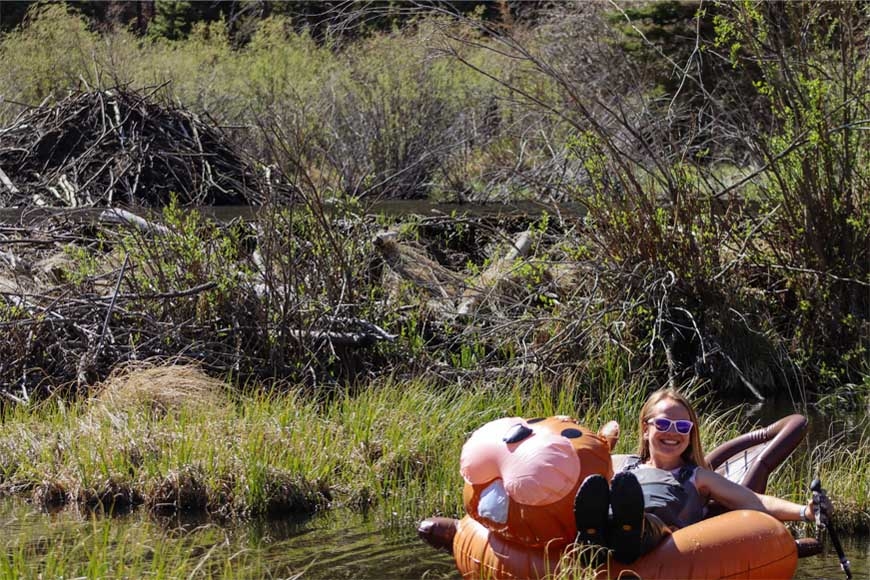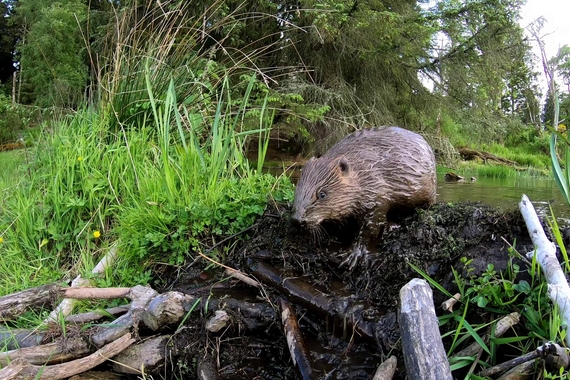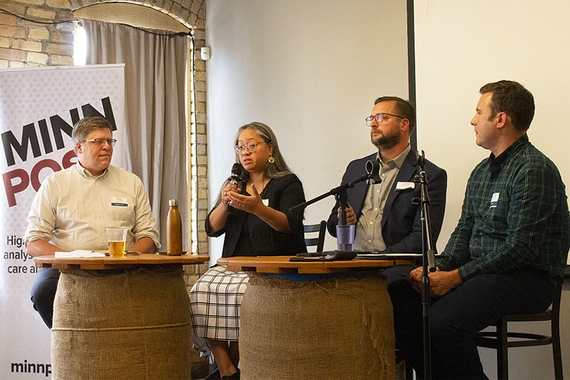Emily Fairfax Wants You to Meet Nature’s Four-Legged Firefighting Friends
Emily Fairfax joined the Department of Geography, Environment & Society this fall as an assistant professor. She works waist deep in the waters of beaver conservation with a goal to teach others how these round little creatures are natural firefighters and climate change activists.
From wetlands to the classroom
“Nobody I know comes into this world with the intention to study beavers,” says Fairfax. “Most of us have found our way to being beaver scientists from some unrelated discipline.”
As an undergrad she studied chemistry and physics at Carleton College in Minnesota and after graduation, she secured a position as a weapons system engineer at Los Alamos National Laboratory in New Mexico.
Fairfax’s self-described “beaver spiral” began in 2014 during her time at Los Alamos. She tuned in to a PBS documentary called Leave It to Beavers. Contrary to what she thought, scientists had not yet learned all there was to know about beavers. After seeing footage of what she called “badass women hydrologists,” she was hooked.
“For the whole next couple of weeks, it was just like, every thought I had was beavers,” said Fairfax. She decided she had to do something about this fascination.
She attended graduate school at the University of Colorado Boulder where she not only earned her PhD in geological sciences but also waded waist deep in beaver ponds as part of her up close and personal education.
As she progressed in her research, she turned toward teaching in order to educate others on the importance of beavers, leading her to the University of Minnesota.“I was really feeling like it was a time in my career when I needed to start mentoring more advanced students,” says Fairfax.
Although there is an abundance of beavers in many of Minnesota's wetlands, Fairfax says the state’s beaver research is lackluster compared to many other states she has worked in. So she is thrilled to be at the forefront of supporting Minnesota's increasing research efforts.
Let's get down to basics
Why exactly should we care about beavers? According to Fairfax, beavers are essentially our four-legged, fire-fighting friends.
“Most of the rivers and streams in North America are unhealthy because of the way we’ve treated them for the past 200 years,” Fairfax explains. For quite some time humans have put more resources into industrial expansion compared to the conservation of our natural resources. “It’s really a challenge to make all our rivers healthy again. It’s too expensive and just too much work to do on our own, so my research focuses on how beavers can do some of the work.”
She says that in locations where beaver dams are present, the landscape is at a lower risk of being destroyed by forest fires. These dams allow water from streams and rivers to slowly seep into the ground, hydrate the surrounding area, and encourage the growth of vegetation—all of which are vital to fire prevention.
While temperatures around the world are on a consistent rise, the wetlands with beaver dams stay cool. So while some might see beavers as pesky creatures, Fairfax says that we have a lot to learn from them.
She says that when you see a wetland that has been completely scorched by fires, and observe that the beaver dam and its surrounding area are virtually untouched, it’s “very humbling to see that and to [realize] that we've got lessons to learn here.”
“It’s all paws and all hands on deck”
Contributing to beaver conservation is easier than you might think. Fairfax says that a place to begin learning some of the lessons beavers can teach is to take five minutes out of your day to learn more about them.
For a long time human beings have given beavers a bad rap. Centuries-old myths depict beavers as fish-eating predators whose dams prevent fish from progressing upstream. In reality, beavers are herbivores, and when they construct their dams, they create canals that let water and fish trickle through undisturbed.
“Watch a documentary or Google an interview about them. There's still lots of myths about beavers that exist out there,” she says. “[Beavers] are the most powerful ecosystem engineers after us humans.”
As Fairfax says, “it's all paws and all hands on deck,” when it comes to beaver research and conservation. While they are small compared to any human activist you see in the news, beavers aren't afraid to get their paws dirty to protect the earth.
While she settles into life in the Twin Cities she is eager to begin her teaching and expand her research. Her new home in the Twin Cities will open new opportunities for teaching and research but one thing that isn't new: “I still think about beavers constantly.”
Learn More About Beavers
Take Dr. Fairfax up on her recommendation to learn more about beavers.
Be a Citizen Scientist
Dr. Fairfax also recommends the iNaturalist app that she and other naturalists use to identify plants, trees, insects, fungi, animals, and more. Users can post their own images to a database where millions of people can weigh in on identifying the organism. Fairfax says it's a great way to stay interested and aware of what is in your ecosystem.
This story was written by Joy Edwards, an undergraduate student in CLA.



